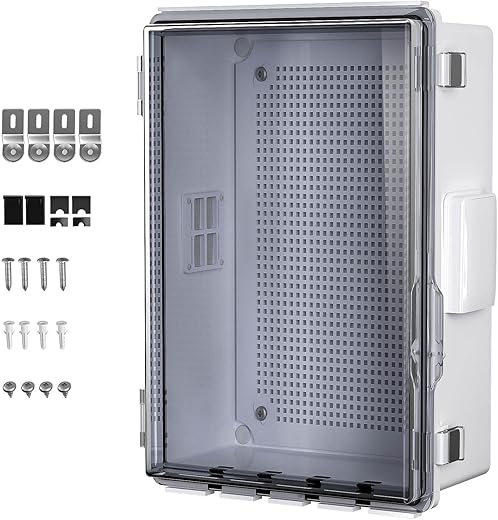








Understanding Network Panels: The Backbone of Your Network Infrastructure
When you think about a well-functioning network, what comes to mind? Perhaps images of fast internet connections, seamless video calls, or quick data transfers? But behind the scenes, making all of this possible, lies a crucial component: the network panel. Whether you’re a tech enthusiast, a small business owner, or just someone looking to enhance your home network, understanding network panels can significantly improve your experience.
What is a Network Panel?
At its core, a network panel is a centralized point for managing and distributing network connections. Think of it as the control center of your network, much like a conductor guiding an orchestra. Without this panel, the harmonious flow of data would quickly descend into chaos. Typically found in server rooms or structured cabling systems, network panels allow for the organization and arrangement of various network cables.
The Anatomy of a Network Panel
Before diving deeper, let’s dissect the components of a network panel.
1. **Ports**: These are the entry and exit points for your cables. Each port connects to a device, allowing data to flow in and out.
2. **Patch Cables**: These short cables connect your devices to the panel. They act like bridges, linking different parts of your network.
3. **Labeling System**: A well-organized network panel will have a labeling system in place. This is akin to a map for a city, helping you navigate the labyrinth of cables.
4. **Mounting Hardware**: Network panels can be mounted on walls or in racks, optimizing space and ensuring easy access.
Types of Network Panels
Not all network panels are created equal. Depending on your needs, you’ll find various types:
– **Patch Panels**: These are the most common, designed to organize incoming and outgoing cables. They allow for easy reconfiguration.
– **Fiber Optic Panels**: If you’re dealing with high-speed internet or large data transfers, fiber optic panels are your best bet. They support faster data rates and longer transmission distances.
– **Combination Panels**: As the name implies, these panels support both copper and fiber optics, offering versatility for mixed environments.
Why Invest in a Quality Network Panel?
You might be wondering, “Do I really need to invest in a quality network panel?” The answer is a resounding yes! Here’s why:
1. **Enhanced Organization**: A good network panel keeps your cables tidy. Imagine trying to find a specific book in a library where everything is scattered. A well-organized panel makes troubleshooting and maintenance a breeze.
2. **Improved Performance**: Quality panels reduce signal loss. Think of it like a smooth highway versus a bumpy road; the smoother the path, the faster you reach your destination.
3. **Scalability**: As your network grows, a quality panel allows for easy expansion. It’s like planting a garden; you can add more plants without uprooting the existing ones.
Installation Considerations
Installing a network panel may seem daunting, but with the right approach, it can be straightforward. Here are some tips to consider:
– **Location**: Choose a dry, cool place away from direct sunlight. Heat and moisture can damage your equipment, much like putting ice cream in a hot oven.
– **Cable Management**: Use cable ties or Velcro strips to keep everything neat. A messy installation can lead to confusion later on.
– **Testing**: After installation, test each connection to ensure everything is working as it should. It’s better to catch issues early than to deal with them later.
Conclusion
In a world increasingly reliant on technology, understanding the components that make up your network is essential. A network panel serves as the backbone, ensuring your data flows smoothly and efficiently. By investing in a quality panel and following best practices for installation and management, you can create a robust network that meets your needs now and in the future.
Whether you’re setting up a home office or managing a corporate network, remember: the right tools can make all the difference. So, are you ready to take the leap into better network management?
FAQs
1. How do I know what type of network panel I need?
Consider your current and future networking needs. If you’re anticipating high data usage or require faster connections, a fiber optic panel might be best. For standard applications, a patch panel will suffice.
2. Can I install a network panel myself?
Yes, with basic technical skills and the right tools, you can install a network panel. However, if you’re unsure, consulting a professional can save you time and potential errors.
3. What maintenance does a network panel require?
Regularly check for loose connections, dust buildup, and cable wear. Keeping your panel organized and clean ensures optimal performance and longevity.
